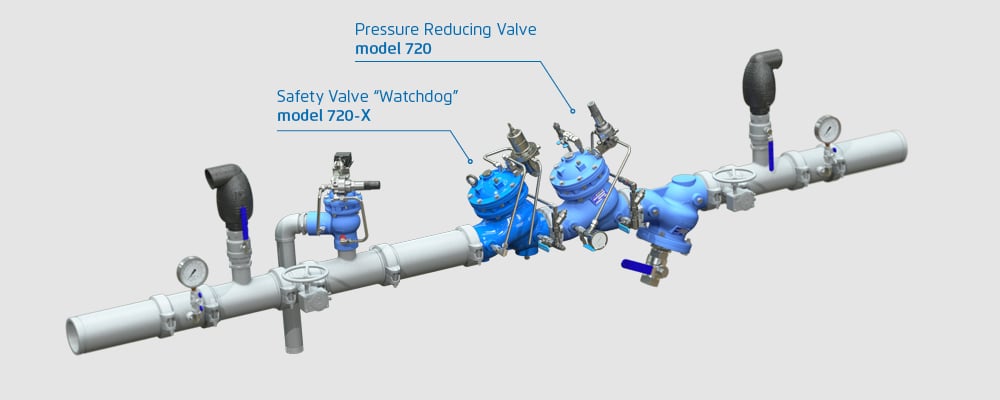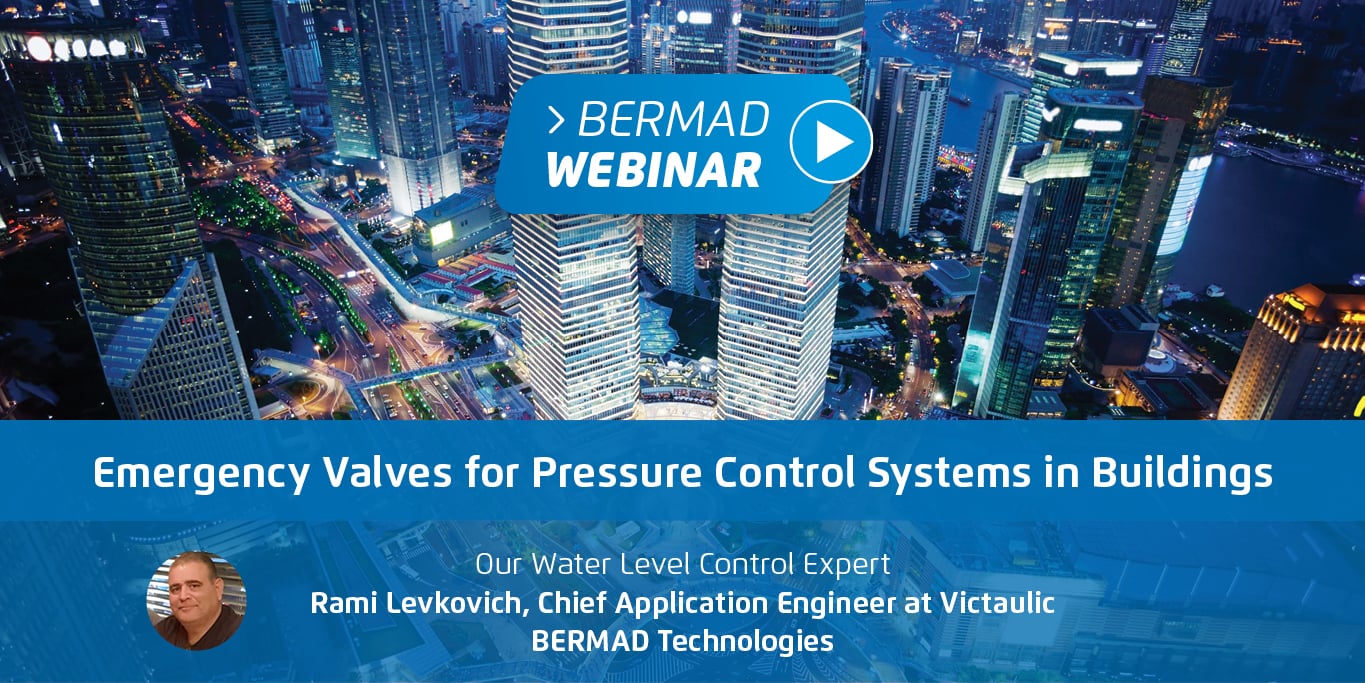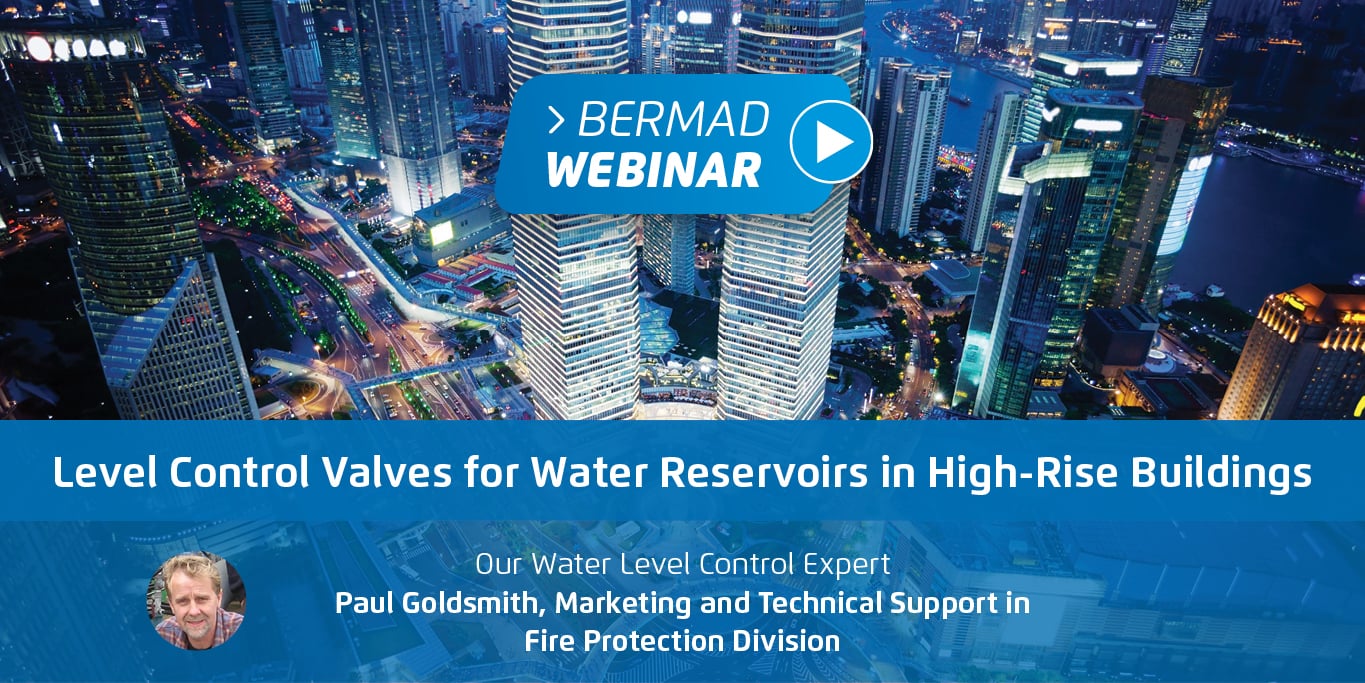In today’s era of global urbanization, high rise buildings offer a practical way to comfortably meet the needs of many while economizing on valuable real estate. However, tall buildings present challenges when it comes to designing water supply systems.
Ideal water pressure for a residential or light commercial building is 2-5 bars. If the water pressure is less than 2 bars, there will not be enough pressure to shower and if it is over 5 bars, water may be wasted. However, a challenge arises as municipal water mains usually supply water pressure at ground level at about 3-4 bars. The water pressure decreases as the water supply goes higher up in the building. This means that city water pressure is usually only sufficient up to about the eighth floor of a building. For this reason, adjustments must be made when building the water supply system in taller buildings to ensure ideal water pressure at all levels.
There are several standard ways to solve this challenge. One is to use booster pumps to deliver adequately pressurized water to higher floors. Another option that has been in use for over a century and is still widely used today is to pump water to a rooftop reservoir. The water then flows by gravity to the floors that are too high to be serviced adequately with municipal pressure.
However, the floors serviced using this top-down supply model experience the opposite problem at the lower floors as water pressure rises with each downward level. For this reason, when water pressure at the upper floors of a tall building with a rooftop reservoir is adequate, there is often overly high pressure at the lower levels. The solution is to install pressure reducing valves to bring the overly high water pressure at these levels back down to acceptable standards.
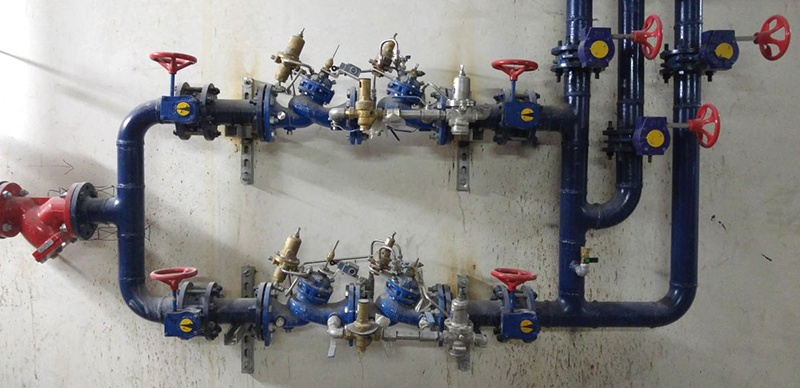 A double branched installation featuring the BC-72S-B2H-P backed-up pressure reducing system with off peak flows bypass and integrated relief device, provides a 24/7 pressurized water supply with maximal safety and compact design.
A double branched installation featuring the BC-72S-B2H-P backed-up pressure reducing system with off peak flows bypass and integrated relief device, provides a 24/7 pressurized water supply with maximal safety and compact design.
How to Install PRVs in a High Rise Building
The optimal placement of a Pressure Reducing Valve (PRV) in a rooftop reservoir building water supply system depends on the system design. One solution is to equip each level that requires water pressure reduction with its own PRV. Each PRV can then be individually calibrated to deliver optimal pressure to its respective floor. However, this approach adds both to initial project costs and maintenance requirements for the system.
Alternatively, the building can be divided into zones of up to 10 floors each with a PRV servicing each zone. In this case, the PRV will be placed at the lower level of the zone and calibrated to the high pressure range. Water pressure within a zone will reduce progressively as it moves up each level. Care must be taken to calibrate the valves to deliver adequate water pressure (between 2.5 and 5 bars) to all levels of a zone.
Valves can be installed in series (one before the other on a single riser) or branching out into secondary risers. We do not recommend installing valves in series because in the event of valve failure, water to the entire building (or large portions of it) will need to be shut down for maintenance.
Another problem with serial installation is that the lower levels of each zone tend to have unstable water pressure. For this reason, if serial installation is unavoidable, we recommend using the BERMAD 720PD Pressure Regulating Valve. This is a proportional valve that delivers a faster response time than a pilot-operated PRV. It will automatically regulate the pressure when needed, and will remain closed when there is no system demand.
In parallel reduction systems in which each zone is provided with redundant valves, it is easy to automatically switch between PRVs to avoid system downtime.
How to Calibrate PRVs to Avoid Cavitation and Noise
When pressure is reduced from high to low, energy is converted to heat and noise. Most of the noises originate from a phenomenon called cavitation where bubbles form and collapse in the valve chamber, sometimes causing physical damage to the valve body.
To avoid noise and cavitation and increase the life of the regulator, it is important to maintain a proper ratio between the water pressure at the inlet of the valve (P1) and the pressure at the outlet of the valve (P2). Maintaining a P1:P2 ratio of no more than 2.5 will prevent the system from entering into the cavitation formation zone.
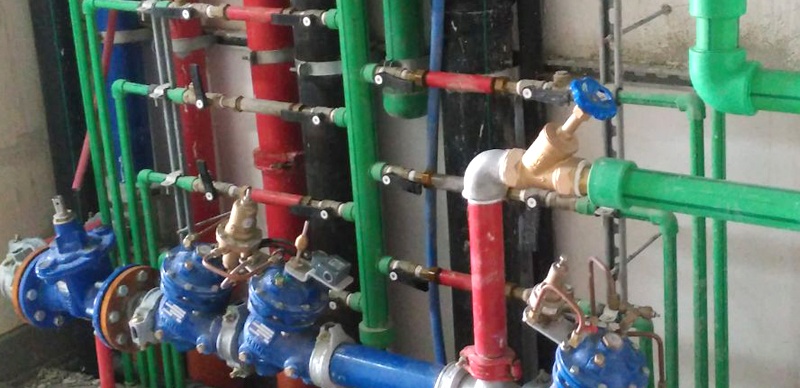 Reduction of high pressure to low pressure using two-stage reduction in a BC-720-PD-P and a BC-720-P pressure reducing valve, both are backed by an emergency PRV (in the middle) and angle shaped pressure relief valve BC-73Q-P.
Reduction of high pressure to low pressure using two-stage reduction in a BC-720-PD-P and a BC-720-P pressure reducing valve, both are backed by an emergency PRV (in the middle) and angle shaped pressure relief valve BC-73Q-P.
Are you Designing a High Rise Building Water Supply System?
BERMAD engineers are available to assist with all your water system design needs. To get in touch with them, contact a BERMAD representative in your region.





